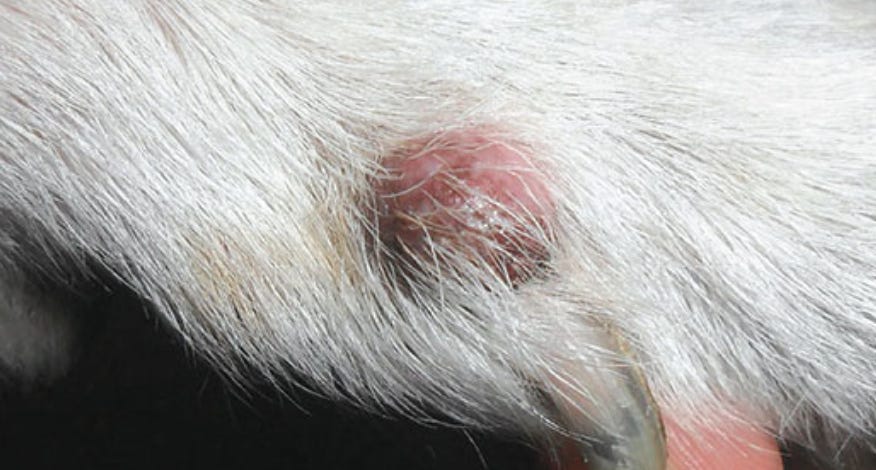🐾 What You Need to Know About Sebaceous Adenomas in Dogs
Sebaceous adenomas are one of the most common types of skin growths found on older dogs. While they may look concerning, the good news is that these tumors are almost always benign, meaning non-cancerous. Breathe a sigh of relief here. Still, for pet parents who’ve experienced the fear of a cancer diagnosis, any lump or bump is reason enough to pause and investigate.
Let’s walk through what sebaceous adenomas are, which breeds are most at risk, and what you should do if you find one on your dog.
🧴 What Are Sebaceous Adenomas?
Sebaceous adenomas are growths that arise from your dog’s sebaceous (oil) glands—tiny glands in the skin that produce sebum, the natural oil that keeps your dog’s coat shiny and skin moisturized. These glands also help protect the skin with mild antibacterial properties.
Adenomas typically appear as:
Pinkish, wart-like lobules
Sizes ranging from ¼” to 1”
Often found on the head, but can show up anywhere—especially around the neck, back, paws, chin, rump, and tail
May ooze a white, waxy, oily substance
They’re more common in senior dogs, and they often don’t cause any harm—unless they become irritated or infected.
🐶 Breeds Most Prone to Sebaceous Adenomas
Some dogs are genetically more likely to develop these growths as they age. Breeds at higher risk include:
Cocker Spaniels (American and English)
West Highland White Terriers
Cairn Terriers
Kerry Blue Terriers
Shih Tzus
Beagles
Basset Hounds
Toy & Miniature Poodles
Dachshunds
Huskies
Coonhounds
Samoyeds
Alaskan Malamutes
If your dog falls into one of these categories, it’s even more important to stay alert and make skin checks part of your monthly care routine.
🔬 Diagnosis: Is It Really Just an Adenoma?
Any new lump on your dog should be examined by your vet. Typically, a fine-needle aspirate is used to sample the cells and rule out more serious conditions like:
Sebaceous gland adenocarcinoma (a rare malignant tumor)
Matrical carcinoma
Sebaceous hyperplasia (non-tumor wart-like lesions)
It may look harmless, but the only way to truly confirm a sebaceous adenoma is through veterinary diagnosis.
🩺 Treatment (If Needed)
Most sebaceous adenomas don’t require treatment. However, there are exceptions:
If the tumor grows rapidly
If your dog is constantly licking, scratching, or rubbing it
If it becomes sore, bleeds, or gets infected
In these cases, your vet may recommend surgical removal especially if it impacts your dog’s quality of life. Some cases may also be referred to a veterinary dermatologist for more advanced care.
🕵️♀️ The Importance of Monthly Check-Ups
Even though sebaceous adenomas are typically not dangerous, they serve as an important reminder of why monthly lump checks matter.
Remember to Check Your Dog once a month, especially if they’ve had a previous cancer diagnosis, or you have a breed where tumors are more common. Early detection can save lives, and it can also give you peace of mind.
Sebaceous adenomas are one of those things that look scary but usually aren’t. Still, if you ever find something new on your dog’s skin, don’t guess get it checked. It’s just one more way we can stand guard for the dogs we love.



